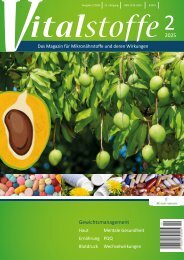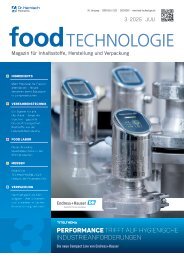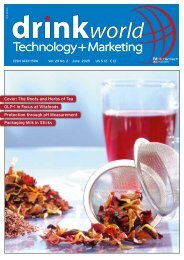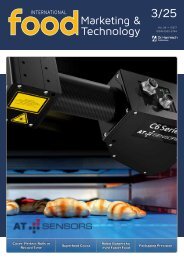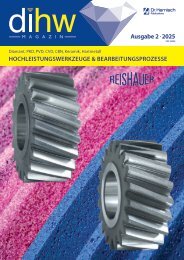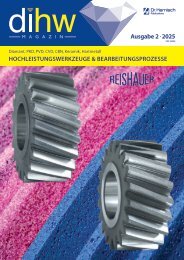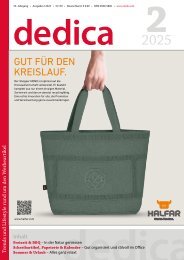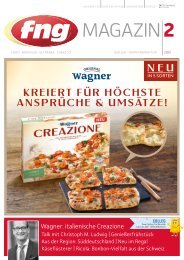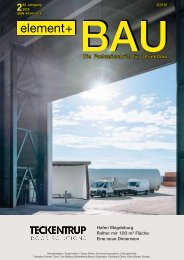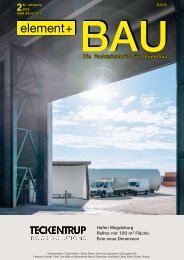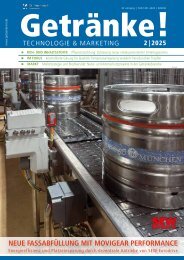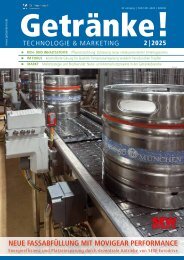PetFood PRO 4/2024
PetFood PRO is the international magazine for executives and specialists in the manufacture of food for domestic animals – the pet food industry. The magazine focuses on food and delicacies for dogs, cats and other small animals, ornamental birds and fish, as well as animals kept in terrariums. We publish feature articles, reports and announcements about new ingredients, technology, equipment and processes, packaging machinery and materials as well as marketing trends and developments. Readers are executives, product developers and specialists in the pet food industry, including process and packaging engineers. PetFood PRO will be published in English. Circulation is worldwide, with an emphasis on important growth markets.
PetFood PRO is the international magazine for executives and specialists in the manufacture of food for domestic animals – the pet food industry. The magazine focuses on food and delicacies for dogs, cats and other small animals, ornamental birds and fish, as well as animals kept in terrariums.
We publish feature articles, reports and announcements about new ingredients, technology, equipment and processes, packaging machinery and materials as well as marketing trends and developments. Readers are executives, product developers and specialists in the pet food industry, including process and packaging engineers. PetFood PRO will be published in English. Circulation is worldwide, with an emphasis on important growth markets.
Transform your PDFs into Flipbooks and boost your revenue!
Leverage SEO-optimized Flipbooks, powerful backlinks, and multimedia content to professionally showcase your products and significantly increase your reach.
PROCESSING
Would you Share your Dog´s
Dinner?
In the UK "human-grade" doesn´t mean pet food is safe for people to eat, but made using ingredients that are classed as fit for human
consumption
Not all human foods are safe for dogs
and cats to eat. But what about the other
way around? Looking beyond the disgust
factor, would you ever chow on your cat’s
kibble or slurp on a gravy-loaded doggie
dish?
With over 50 pieces of applicable
legislation governing the manufacturing
of pet food in the UK, Fortress Technology
examines the connection between the
humanization of pets and how this
is driving higher demand for quality,
nutritious ‘human-grade’ pet food.
In 2024, it was estimated that over 17.2
million UK households owned at least
one of 36 million pets . From providing
companionship and support therapy to
outdoor adventures, our furry friends are
now considered central to the household
and on par with any family member. So
much so, that 21% of British householders
admitted to spending the same amount
on pet food than they do on their own
groceries, if not more .
Food is served
‘Human grade’ is a term coined in
America. There, the Association of
American Feed Control Officials
(AAFCO) defines it as ‘pet food
manufactured in a manner consistent
with regulations for ready-to-eat
human food products’. It means
something different in the UK.
“Regardless of how tasty-looking any
pet food is, if it was produced in a
pet food processing factory it cannot
be legally classed as human grade in
the UK,” highlights Phil Brown, Sales
Director at Fortress Technology Europe.
“Instead, the UK term relates to
ingredients from human grade
sources. Which means that any meats
used in pet food products must not
be dead, dying or diseased. Instead,
the meat must come from animals
that are passed as being fit for human
consumption. Nevertheless, the
increasing pressure from consumers
to ensure their cuddly companions
receive safe, nutritious, high-quality
food has encouraged tighter pet food
processing regulations in recent years,
he goes on to say.”
According to the Association UK Pet
Food, over 50 pieces of legislation
govern the manufacturing of pet
food in the UK to ensure consistent
high standards and utmost safety and
hygiene. The Guide to Good Practice
for the Manufacture of Safe Pet Food
developed by FEDIAF comprehensively
covers the safety and hygiene of pet
food processes and products. In 2021,
updated FEDIAF Nutritional Guidelines
for Complete and Complementary Pet
Food for Cats and Dogs were released.
Like human food, pet food processors
are required to adopt a HACCP and
formal foreign bodies control policy.
With more canine and feline mouths to
feed, robust pet food safety and detailoriented
inspection has never been
more paramount.
24
Technology & Marketing




